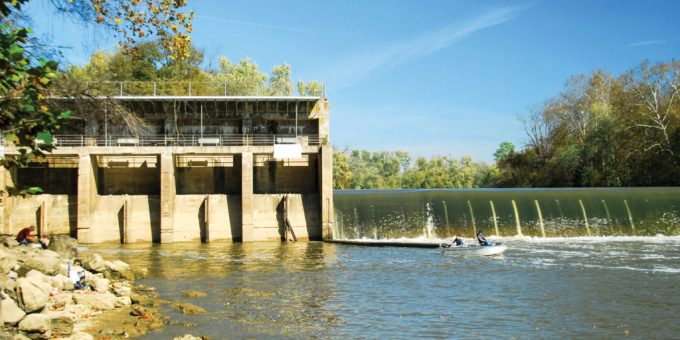
LAWRENCE COUNTY- The Department of Natural Resources held the first of three planned meetings to discuss the best course of action regarding Williams Dam. The federal government is offering funding for the removal or partial removal of low-head dams that are no longer in service for their original purpose. The Williams Dam was built in 1913 and provided hydroelectric power to the citizens and businesses in the area into the 1950s when it was decommissioned.
DNR will conduct a feasibility study to weigh options regarding the removal or partial removal of the dam or leaving it as is and performing repairs as needed. Many factors will go into the decision, and the study will provide the information needed to choose the best course of action. Ross St. Clair, an engineer with SWCA, gave a presentation on what the study encompasses and listened to residents’ concerns and opinions.

The study will be comprehensive, collecting data to investigate all possible outcomes and repercussions of each solution, whether total or partial removal or leaving the dam as it is. A topographic and bathymetric survey will be conducted, as well as sediment sampling and testing of public water wells and intakes, as well as many other tests and observations. After the study is complete, a review of anticipated outcomes for each solution will determine what will happen with the dam.

The Williams Dam is a great recreational site for picnics and fishing, and that has been its main use for almost 75 years since it was decommissioned. It also provides aesthetic value to the area and is a historic site in Williams, with generations of residents enjoying the dam for leisure.
It is in need of repair, and there has been no movement in trying to find use for it as a powerplant again. While the dam provides recreational space, there are several drawbacks to having it in place and it not providing electricity. St. Clair’s presentation listed the following drawbacks:
- Recreational hazard: There have been eight recorded deaths at the dam, and many injuries and rescues
- Operation, maintenance, and repair costs
- Boating barrier
- Aquatic organism passage barrier
- Habitat alteration
- Water quality impact
- Interruption of sediment movement and natural flow regimes
At the conclusion of the meeting, residents were afforded the opportunity to ask questions or voice concerns related to the project. Many in attendance had very valid questions regarding the cleanup of land that was previously submerged, whether PCBs from General Motors were present in the sediment, and the social impact of removal, among others. While residents were assured testing had been done and no PCBs had been detected, other questions and considerations will have to be answered as information becomes available throughout the study. St. Clair stressed that the session was being recorded and that all questions and concerns would be addressed in future meetings, the next of which will be held in early 2025. DNR and SWCA stated that there is no pre-conceived notion of what will be done with the dam and that all solutions are being explored to the fullest with this feasibility study.



